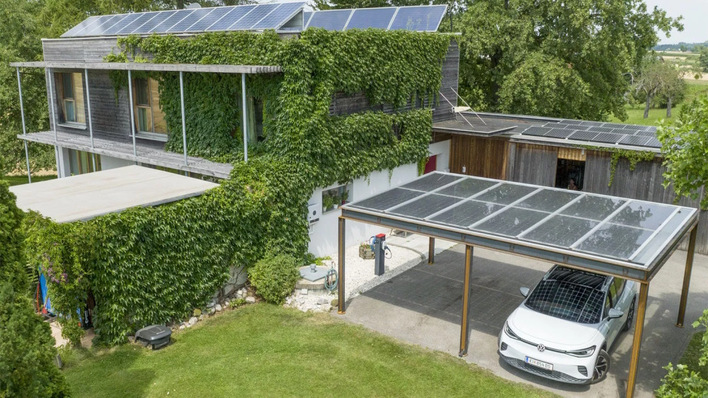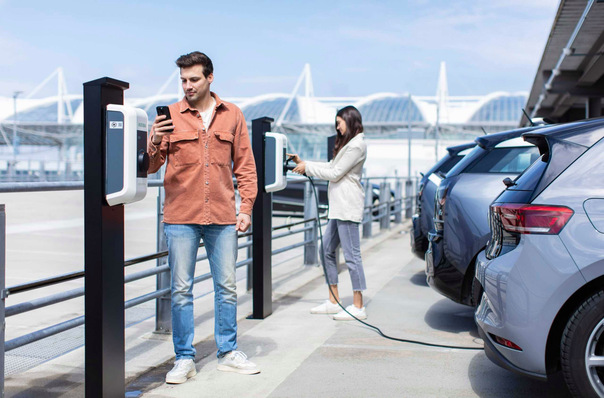Until now, the Popp family from Upper Franconia has been heating with oil. Every year they had to burn about 5,000 litres of heating oil to heat the rooms of their old house and to provide enough hot water. This was to change when a new home was built. For this Gerhard Popp relied on a good standard of insulation on the one hand. But on the other hand, he did not want to switch to renewables alone, he wanted to take control of the energy supply himself.
Therefore, he equipped his roof with a photovoltaic system. Although he does not integrate the modules into the roof cladding - an alternative to conventional roofing for new buildings, which is definitely worthwhile. But he has at least found an aesthetic compromise. For he has opted for black modules, which are not too conspicuous in comparison to the likewise black roof tiles.
Probes drilled for the heat pump
These modules with an output of 9.86 kilowatts drive a heat pump. There would have been room for more modules on the roof. But then the Popp family would have had to pay a proportionate EEG levy on all the electricity they used themselves. But they wanted to avoid that. The fitters of Gemeinhardt AG from Oberkotzau near Hof laid four geothermal probes for the heat supply, reaching down to a depth of 100 metres, in order to obtain the heat for the heat pump from there. The system mainly runs when the sun is shining and the modules supply sufficient electricity. What is not immediately consumed is sent by the heat pump to a buffer storage tank with a capacity of 1,000 litres. There is also a ventilation system with heat recovery, which is in operation all year round.
Energy consumption drastically reduced
In this way, the family consumes only a tenth of the energy needed to provide heat in the old and much smaller building. After all, they can heat the new house with a living space of 300 square metres with only 5,200 kilowatt hours of electricity. That is the equivalent that would be achieved with 520 litres of heating oil. More than half of the electricity for the system comes from the solar generator on the roof.
The Pop family achieves this high value with an electricity storage tank, which is also installed in the cellar. Because if there is not enough solar power from the system on the roof itself, the domestic power station, which was supplied by the Osnabrück-based storage tank manufacturer E3/DC, can supply additional solar power. In this way, the family also manages to fill up half of the electric vehicle, which is charged with solar power using a wallbox in the garage.
Storage capacity increased
Initially, the family had a domestic power plant S10 E from E3/DC with a capacity of 10.56 kilowatt hours installed. With its integrated energy management, the three-phase device can control the individual consumers in such a way that as much solar electricity as possible is consumed locally. This is because the solar electricity produced is first sent to the consumers on site. If these are sufficiently supplied, the management switches over and charges the storage unit. Only when the storage tank is full and the consumption in the building is still covered does any surplus solar electricity flow into the distribution network of the local supplier. In order to increase the proportion of solar power consumed locally, Gerhard Popp has had the storage system upgraded to a volume of 15.84 kilowatt hours after one year of operation. To do this, the installers simply inserted an additional battery module - an advantage of modular storage systems.
A detailed description of the system can be found in the project database of the Solar Age architecture portal. There you will also find the concrete consumption values and production data of the solar systems. (mfo)







